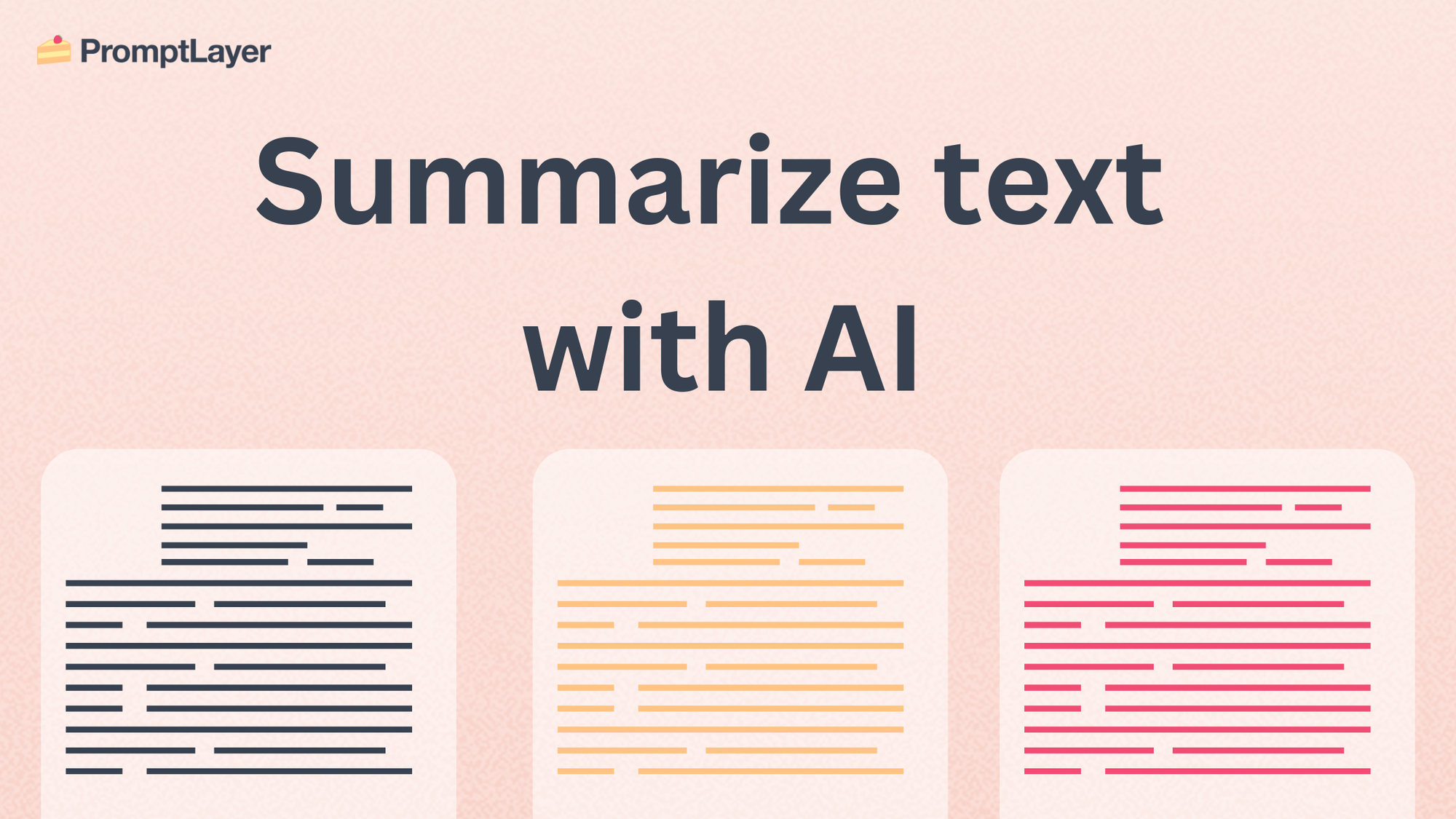Best Prompts for Text Summarization: Guide to AI Summaries

Text summarization is an essential tool for efficiently digesting information.. Whether you’re a student, researcher, content creator, or business professional, summarizing large volumes of text can save time and clarify complex ideas. But how do you make AI tools like ChatGPT or Claude deliver the best prompts for text summarization? In this guide, we’ll explore strategic prompting techniques, share example prompts, and give you practical tips on refining AI summaries to match your needs and style.
Why Text Summarization Matters
Text summarization allows you to extract key insights without wading through pages of content. By directing AI tools with effective prompts, you can:
- Extract Key Points: Identify the most relevant information quickly.
- Simplify Complex Topics: Transform dense jargon into understandable summaries.
- Tailor Output to Your Audience: Adjust tone and complexity for different readers.
- Save Time: Streamline research, report creation, and content curation.
What Makes a Good Prompt for Text Summarization?
A good prompt does more than just ask, “Please summarize this text.” It includes:
- Clear Intent: Specify the goal or the type of summary (e.g., “Highlight the key arguments,” “Focus on ethical implications,” or “Distill into three bullet points”).
- Concise Guidelines: Offer word limits or preferred formats like bullet points, short paragraphs, or numbered lists.
- Audience Focus: Indicate who the summary is for (e.g., students, executives, or general readers).
- Stylistic Cues: Clarify tone (formal, conversational, etc.) or depth (high-level vs. in-depth).
By incorporating these elements, you’ll ensure the AI’s output aligns closely with your objectives.
You can test, analyze, deploy, and manage prompts with your whole team. Get started here.
5 Prompting Techniques for Better Summaries
1. Zero-Shot Prompting
- What It Is: Rely on the AI’s general knowledge without providing examples.
- When to Use: Quick overviews or straightforward documents where deep context isn’t required.
Example:
“Summarize the following text in a single paragraph, focusing on the main conclusion.”
This approach is fast but can sometimes miss nuances. If you need higher accuracy or a specific tone, consider adding examples or additional instructions.
2. Few-Shot Prompting
- What It Is: Provide sample summaries to guide the AI.
- When to Use: For specialized topics where you want to maintain a certain style or level of detail.
Example:
“Example: Text: [Sample text]. Summary: [Sample summary].
Now summarize the following text with the same style and level of detail: [Your text].”
Few-shot prompting helps the AI mirror the format, depth, or tone of your sample summaries.
3. Role-Specific Prompting
- What It Is: Assign a role or perspective to the AI.
- When to Use: You need the summary tailored to a particular profession or audience, such as educators, policymakers, or marketing teams.
Example:
“As a healthcare consultant, summarize this study for an audience of hospital administrators. Highlight cost-saving measures and patient outcome data.”
Role-specific prompts focus the AI on the angle or priorities that matter most to that role.
4. Step-by-Step (Chain-of-Thought) Prompting
- What It Is: Instruct the AI to lay out its reasoning process before giving a final summary.
- When to Use: Complex, technical, or academic texts where you want to ensure thorough understanding.
Example:
“Walk through the key points of this research paper step-by-step, explaining each point’s significance. Then summarize the entire document in two sentences.”
By revealing its thinking process, the AI is less likely to omit important details.
5. Instruction-Heavy Prompting
- What It Is: Provide explicit, detailed instructions to minimize ambiguity.
- When to Use: You have strict requirements (length limit, bullet points, specific elements to emphasize).
Example:
“Summarize this article in exactly 50 words, focusing on the environmental impact and future research recommendations. Use bullet points, and avoid direct quotes.”
Clear instructions help ensure the summary is both accurate and fits your desired format.
Best Prompts for Text Summarization | 6 Examples
Below are some practical examples you can adapt to fit your context:
Ultra-Condensed Social Media Teaser
Prompt:
“Condense the content into a 20-word summary suitable for a tweet, emphasizing the main conclusion and its immediate importance.”
Aim: Provide a bite-sized summary that quickly grabs attention on social platforms.
Chain-of-Thought Summary for Complex Research
Prompt:
“Analyze the methodology, key results, and limitations of this scholarly article step-by-step. Then craft a 3-sentence summary focusing on how the study’s findings can be applied in practice.”
Aim: Encourage a structured thought process that leads to an accurate, concise final summary.
Executive Summary with Action Items
Prompt:
“As a project manager, summarize the key findings of this report in under 200 words, including at least three actionable recommendations.”
Aim: Supply decision-makers with immediate action steps and crucial insights.
Bullet-Point Policy Brief
Prompt:
“Provide a bullet-point summary of the following policy document, listing the primary objectives, proposed strategies, and potential challenges in under 100 words.”
Aim: Offer a quick-hit overview for stakeholders or policymakers pressed for time.
Educational Summary for Lay Audience
Prompt:
“As if explaining to a beginner, summarize this document in two short paragraphs, focusing on the fundamental concepts and their relevance.”
Aim: Make the content accessible to those with little to no background on the topic.
Concise Overview with Key Takeaways
Prompt:
“Summarize the following text in one brief paragraph, highlighting only the main conclusion and two supporting points.”
Aim: Achieve a succinct overview that distills the text down to its core insight and key evidence.
Common Pitfalls in AI Summarization—and How to Avoid Them
- Overloading the Prompt:
- Mistake: Asking the AI to do everything at once, resulting in vague or cluttered output.
- Fix: Keep your prompt focused, specifying the format and scope clearly.
- Unclear Objectives:
- Mistake: Merely saying “Summarize this text” without context.
- Fix: Define your aim: “Focus on the main argument” or “Highlight ethical considerations.”
- Ignoring Audience Needs:
- Mistake: Using advanced vocabulary for beginner readers or over-simplifying for experts.
- Fix: Tailor language level and complexity to the target audience.
- Failing to Edit:
- Mistake: Copying AI outputs verbatim without reviewing.
- Fix: Always revise AI-generated text to align with your voice and accuracy standards.
Evaluating Your AI Summaries
After the AI generates a summary, do a quick checklist:
- Accuracy: Does it capture the text’s core ideas?
- Clarity: Is the language straightforward and reader-friendly?
- Completeness: Does it include all essential points without overextending?
- Brevity: Is it concise enough to be scanned at a glance?
- Relevance: Does it speak to the target audience’s needs?
If the summary doesn’t meet these criteria, refine your prompt and try again.
Tips for Making Summaries Your Own
- Customize the AI’s Output: Edit for tone, style, or examples that resonate with your audience.
- Add Personal Insights: Insert real-world examples, anecdotes, or case studies for extra value.
- Stay Consistent: Maintain a consistent tone, even if you use different AI tools.
- Practice, Practice, Practice: The more you experiment with prompts, the sharper your AI summarization skills become.
Conclusion
Using the best prompts for text summarization allows you to swiftly distill complex material and present it in a clear, concise format. By experimenting with zero-shot, few-shot, role-specific, chain-of-thought, and instruction-heavy prompts, you can fine-tune how AI tools produce summaries tailored for different audiences, contexts, and levels of detail. Always remember to proofread and personalize the final output—AI is a powerful ally, but your unique perspective and expertise remain irreplaceable.
About PromptLayer
PromptLayer is a prompt management system that helps you iterate on prompts faster — further speeding up the development cycle! Use their prompt CMS to update a prompt, run evaluations, and deploy it to production in minutes. Check them out here. 🍰



